Japanese Pagoda Tree
Styphnolobium japonicum
non-native
Other Name:
Chinese Scholar Tree
The Japanese Pagoda Tree is a non-native species from China. The first record of it in the United States was in New York City during the early 1800s. Its limited range includes Virginia, North Carolina, Maryland, Delaware, Pennsylvania, New York, and Ohio. A Japanese Pagoda Tree is off the west path of Monticello Park near the weirs at the south end. It is called "Japanese" because of its use in Japan around Buddhist temples.
Identification Tools
![]() Missouri Botanical Garden
Missouri Botanical Garden
![]() tree-guide.com
tree-guide.com
![]() NC State Extension
NC State Extension
Ranges
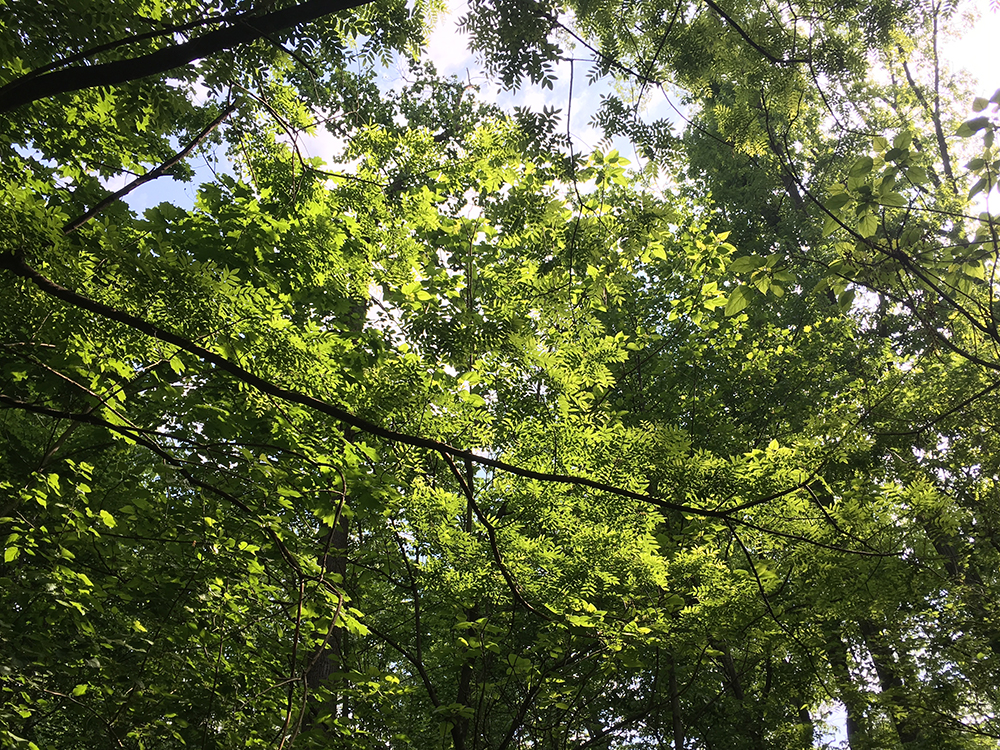
This is one of two views you will get of the single Pagoda Tree in Monticello Park, as it is tall and its branches mingle high above with others over the stream.
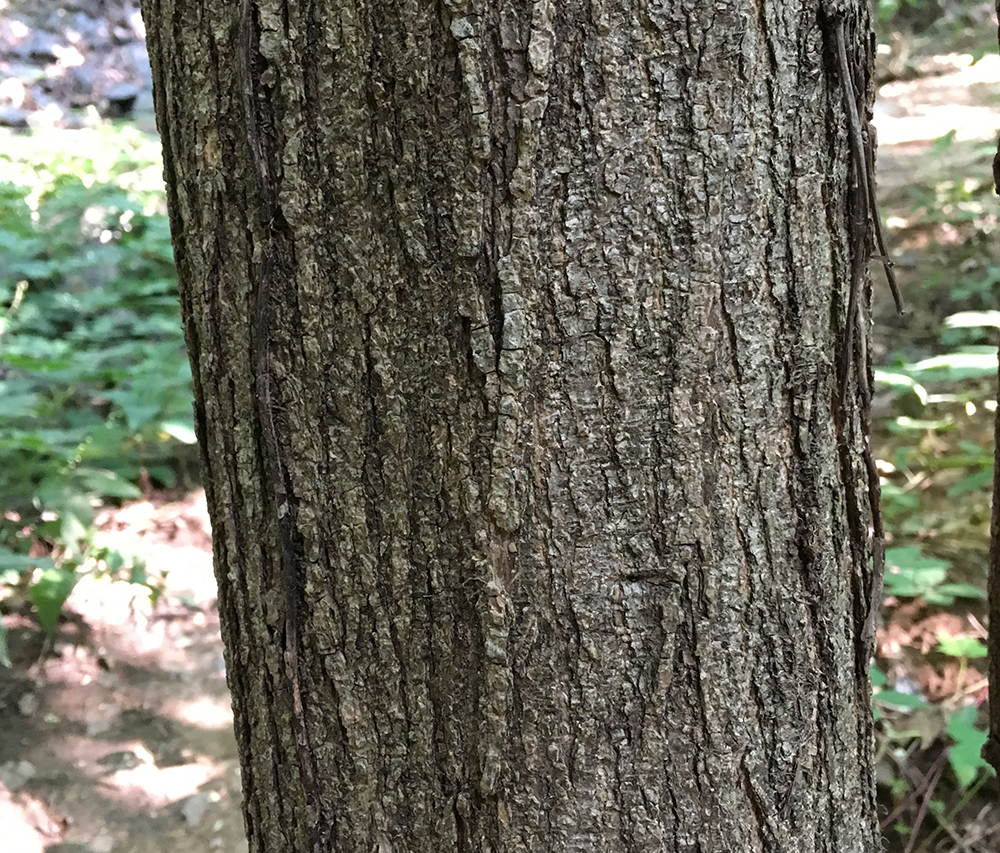
This is the other view you will get of the Pagoda Tree; its trunk beside the path.

These are the leaves of the Pagoda Tree. They are similar to those of the Mimosa Tree, but if you study them you'll be able to tell them apart. Additionally, the trees have overall different forms, with these having a more upright, traditional tree form, while Mimosas grow long thin branches that can't help arching under their own weight.
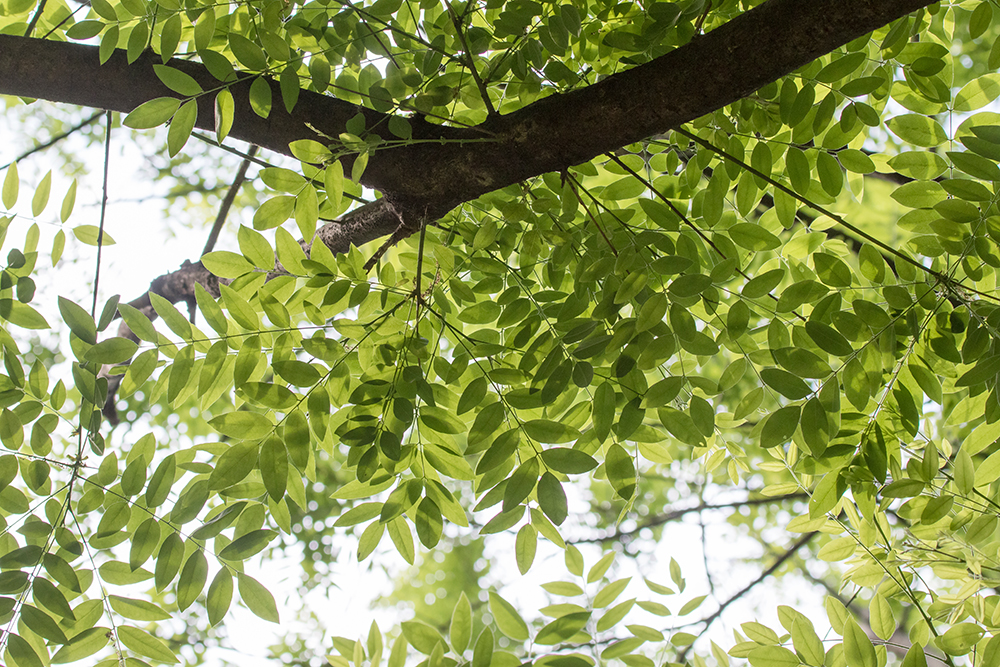
A closer view of Pagoda Tree leaves
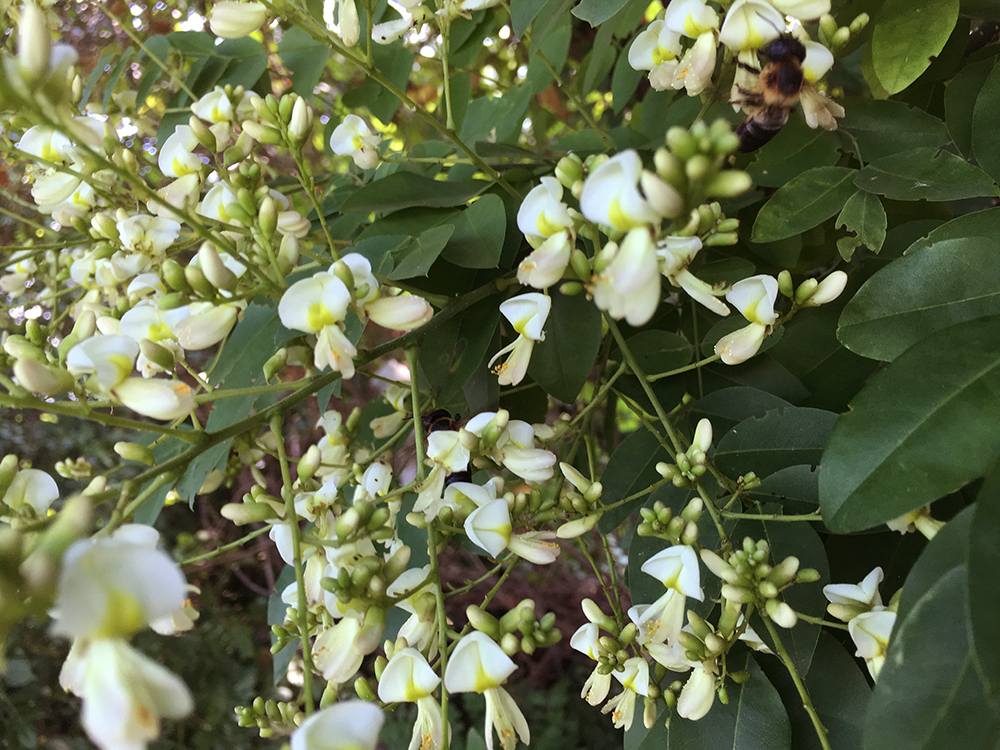
These are the flowers, which you may find on the ground beneath the tree. That is how the tree in the park makes its presence known. This tree blooms in July.
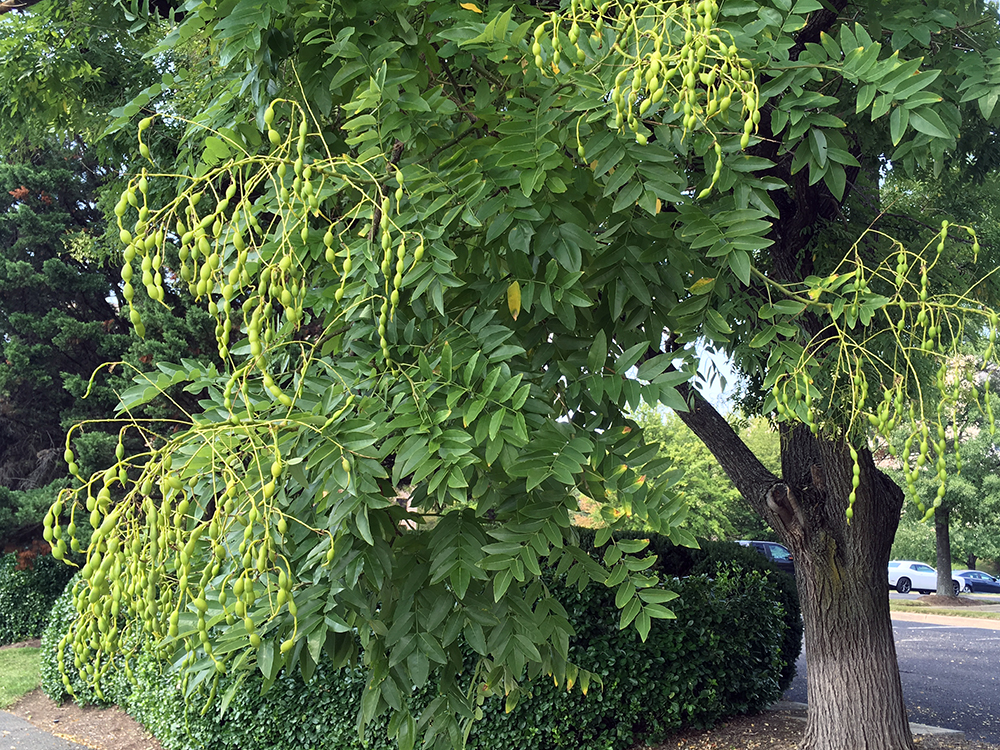
These are the seedpods that begin forming while the tree is still in bloom. They mature in August. This is obviously not the tree in the park, as the pods can't be reached from the ground.
Return to the Index
